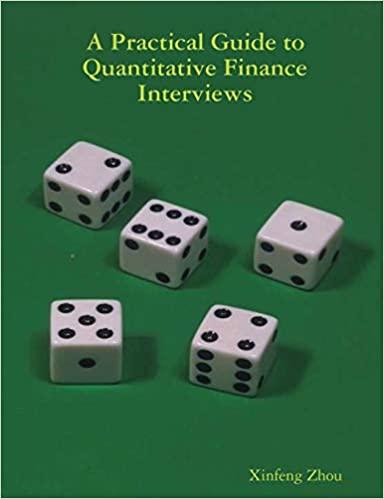Question
True/False The put-call parity is derived based on the principal of no arbitrage. That is, the put-call parity equation holds only when the market is
True/False
The put-call parity is derived based on the principal of no arbitrage. That is, the put-call parity equation holds only when the market is reasonably good enough so that arbitrage opportunities are not allowed.
Today Jim bought a call option and Jill wrote a call option. The options are exactly the same (with the same underlying asset, same exercise price, same expiration date, same in every aspect). When the underlying stock price changes, for every dollar Jim gains, Jill loses a dollar, and vice versa.
In reality, stock option contracts are based on the unit of 100 shares and expire on the third Friday of the month.
An out of the money option means that if you exercise the option now you will be able to get money out of it.
An option is a financial contract that gives the owner the right to buy or sell some asset at a fixed price on or before a given date.
Step by Step Solution
There are 3 Steps involved in it
Step: 1

Get Instant Access to Expert-Tailored Solutions
See step-by-step solutions with expert insights and AI powered tools for academic success
Step: 2

Step: 3

Ace Your Homework with AI
Get the answers you need in no time with our AI-driven, step-by-step assistance
Get Started


